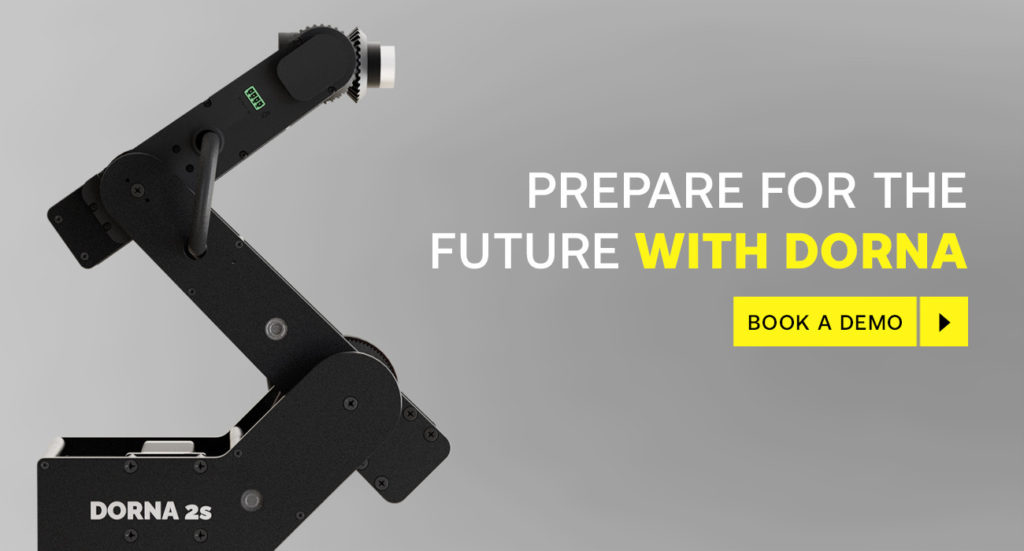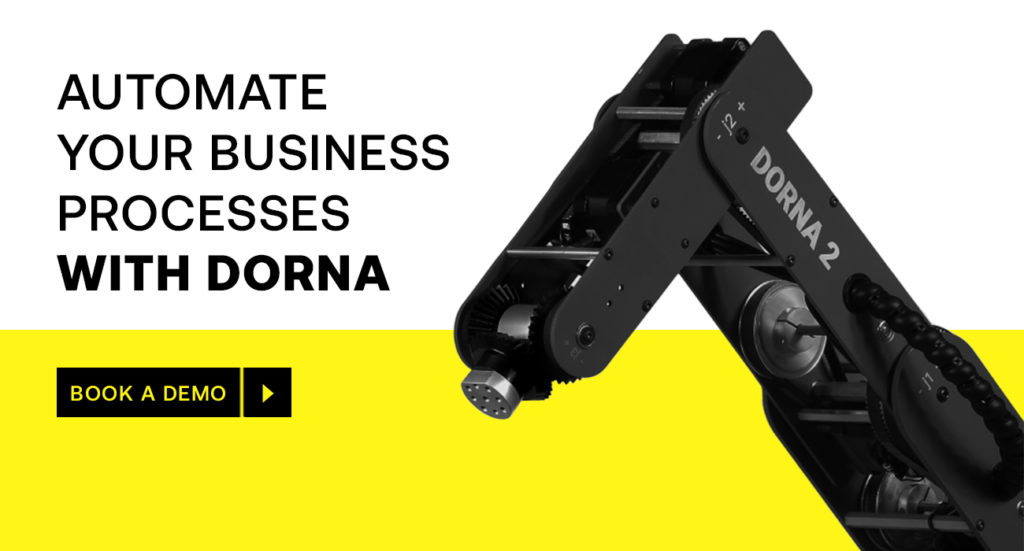Blogs, Products
Top Applications Of Robotic Arms
Robotic arms, also known as manipulators, are versatile mechanical limbs that are programmed to perform tasks with unparalleled speed, accuracy,…
43 minute read
In This Article
In the dynamic landscape of technological innovation, robotic arms have emerged as transformative tools across diverse industries. Some businesses, however, still face significant challenges in fully embracing this cutting-edge technology.
In this blog, we embark on a comprehensive exploration of the top challenges associated with the adoption of robotic arms and unveil the solutions offered by Dorna Robotics through its latest innovation — the Dorna 2S.

From tackling precision issues and power interruptions to simplifying setup processes and enhancing connectivity, each challenge is met head-on with our cutting-edge technology. The Dorna 2S, with its array of features designed to address industry demands, stands at the forefront of this technological revolution. It offers businesses a seamless path to a future where precision, reliability, and efficiency reign supreme.
Precision is the indispensable requirement of any successful robotic arm operation. In certain industrial tasks that demand meticulous movements, inaccuracies in positioning can lead to costly errors and cause damage to the company’s reputation. Traditional robotic arms often face challenges related to positional inaccuracies, primarily attributed to factors like belt flex and the need for homing at startup.
Dorna Robotics tackles this precision challenge with the introduction of absolute encoder technology in the Dorna 2S. Unlike conventional robotic arms, the Dorna 2S utilizes high-resolution absolute encoders on its joints, ensuring accurate positioning without any margin for error. This advanced technology eliminates concerns related to belt flex and the need for homing at startup, setting a new standard for precision in robotic arm operations.
Power interruptions can be a significant source of concern in automated processes. Abrupt halts due to power losses not only disrupt operations but also pose risks to the integrity of equipment and products being handled by the robotic arm. The challenge lies in developing a system that can gracefully manage deceleration in the event of a power loss.
Dorna Robotics addresses this challenge by incorporating regenerative braking circuitry in the motor drive system of the Dorna 2S. This innovative feature ensures controlled deceleration in the face of power loss, mitigating the risks associated with sudden stops. The regenerative brakes not only enhance the reliability of the robotic arm but also contribute to a safer operational environment, showcasing Dorna’s commitment to real-world functionality.
The setup process for robotic arms can be intricate, often involving an elaborate web of cables and connections. This complexity not only poses challenges during the initial installation but also makes subsequent maintenance and troubleshooting more inconvenient. Businesses, especially those new to automation, seek solutions that have a streamlined and simple integration process.
We simplify the setup process with an efficient approach; Dorna 2S requires only one cable to connect the robot to the controller box. This reduction in cabling not only enhances the aesthetics of the setup but also contributes to improved reliability and ease of maintenance. It is yet another testament to Dorna’s dedication to making robotic arm integration accessible and user-friendly for businesses of all sizes.
Payload capacity is a crucial factor in determining the versatility of robotic arms. Many traditional models struggle with handling heavier loads, limiting their applications. This challenge becomes pronounced in industries where diverse tasks require varying degrees of strength and precision, ultimately sacrificing operational flexibility and efficiency.
The capabilities of the new Dorna 2S robot are elevated by the incorporation of more powerful motors. This upgrade results in a substantial increase in the robot’s payload capacity, now capable of handling up to 2 kg. The enhanced power not only broadens the scope of applications but also makes the Dorna 2S a reliable solution for tasks that demand both precision and strength.

Connectivity is a key consideration in industrial applications where robotic arms interact with various tools and equipment. The challenge lies in providing a robotic arm with sufficient connectivity options to adapt to the diverse needs of different tasks, from end-of-arm tools to pneumatic devices.
The Dorna team addresses connectivity concerns with strategic design features on the Dorna 2S. The robot is equipped with IO pins located at the head for convenient connections to end-of-arm tools. Additionally, two air ports at the head allow for the direct connection of pneumatic tools, enhancing the adaptability of the Dorna 2S in various industrial settings.
Industrial environments can be harsh, subjecting electronic components to conditions that may compromise their reliability. It requires, as a result, designing a robotic arm that can withstand these harsh environments, ensuring the longevity and consistent performance of the electronic elements.
Prioritizing the reliability of the Dorna 2S, all electronics, including encoders, connectors, and PCBs, are fully covered by the Dorna team. The design choices shield the sensitive components from environmental factors, making the robot resilient in challenging industrial conditions.
High-speed applications demand a mechanically stable robotic arm to ensure accurate and error-free operations. Traditional robotic arms often struggle to maintain precision and stability at increased speeds, limiting their effectiveness in tasks requiring rapid and dynamic movements.
Our latest robot, Dorna 2S is endowed with a sturdier mechanical design and incorporates higher-rated bearings and shafts. This robust construction not only addresses concerns of mechanical instability but also makes the Dorna 2S ideal for high-speed applications. It ensures the robot’s continued precision and stability in dynamic industrial environments.
While the benefits of robotic arm technology are evident, budget constraints often hinder the widespread adoption of automation solutions. Businesses, especially smaller enterprises, seek cost-effective options that provide high-performance capabilities without sacrificing quality.
We understand the economic considerations of businesses of all sizes; which is why Dorna is positioned as an affordable yet high-performance solution. Dorna 2S not only offers a quick return on investment but also makes adopting automation more accessible to businesses of all sizes. Our mission is to ensure that the benefits of robotic arm technology are within reach for a diverse range of industries.


The challenges associated with robotic arm adoption are vast and varied, from precision and power to mechanical stability and budget constraints. Dorna Robotics, with its innovative Dorna 2S, systematically addresses each of these challenges, showcasing a commitment to making automation accessible to all.
The Dorna 2S not only solves challenges but also opens up new possibilities, empowering even small businesses to conquer the automation frontier with confidence and efficiency. For those ready to embark on the journey of robotic arm adoption, Dorna Robotics stands as a reliable partner, offering a transformative solution in the form of its robots.
With Dorna Robotics, the challenges of today become the stepping stones to a more automated, efficient, and cost-effective future.
Start your automation journey with Dorna today!
Blogs, Products
Robotic arms, also known as manipulators, are versatile mechanical limbs that are programmed to perform tasks with unparalleled speed, accuracy,…
43 minute read
Blogs
Robot joints are the movable connections between different parts of a robot's body, much like the joints in humans. These…
39 minute read
Blogs
In this blog, we delve into the domain of palletizing robots, outlining their purpose and operation, and exploring how they…
24 minute read
Blogs, Products
Robots are steadily becoming part of various industrial processes, allowing humans to sidestep monotonous, hazardous, or demanding tasks. This blog…
21 minute read